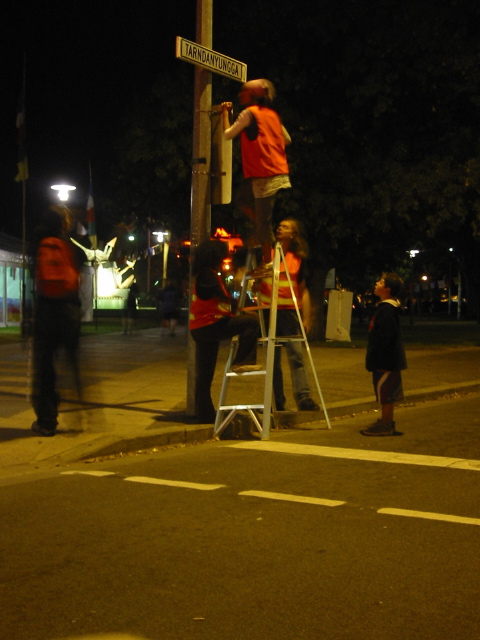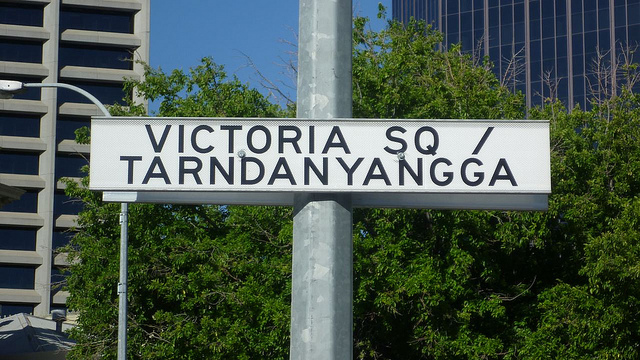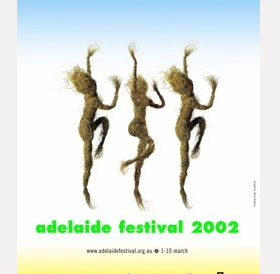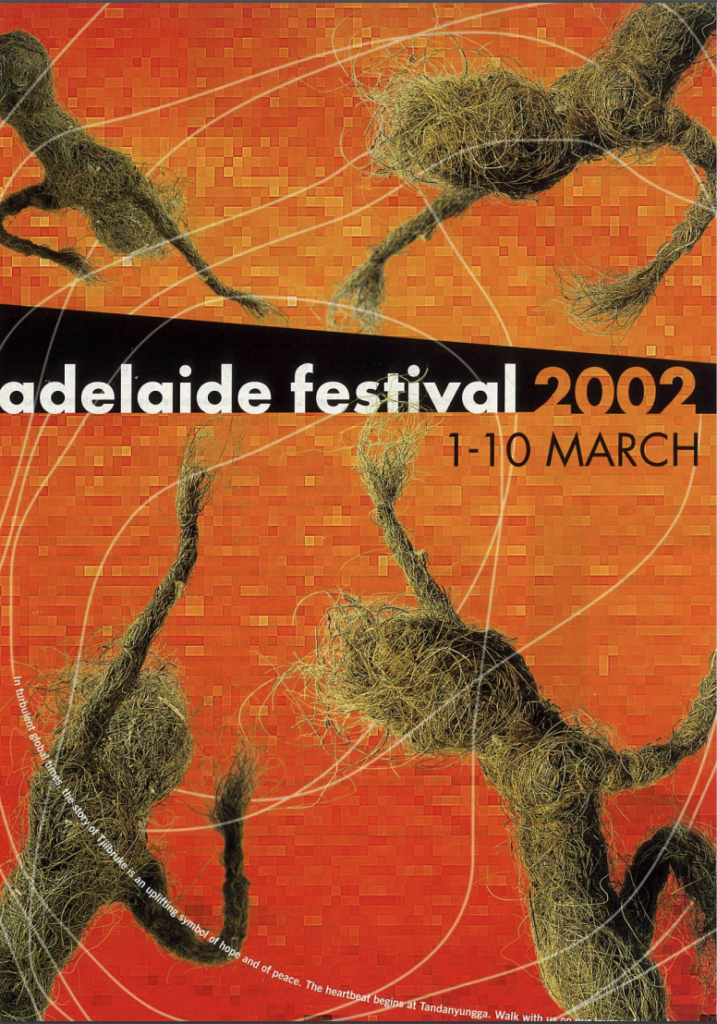Public Art Action Coalition
Press Announcement
10 March 2002
On Saturday night, 9 March 2002, the Public Art Action Coalition removed 10 of the Victoria Square street signs in the heart of Adelaide and replaced them with signs reading Tarndanyungga.
The Public Art Action Coalition, a group of Adelaide and South Australian artists from diverse cultural backgrounds supported by national and international artists, is dedicated to new visions and possibilities for representation within the public sphere. This art action was inspired by the use of the name Tarndanyungga to describe this place during the Adelaide Festival 2002.
50% of the signs reading Victoria Square were replaced. Appropriate consultation was undertaken in regard to the use of the name Tarndanyungga. None of the signs replaced has been damaged in any way and they are being returned to the Adelaide City Council.

![]()
During the Adelaide Festival 2002, the centre of the Adelaide, known as Victoria Square, was called Tarndanyungga, by the organisers of the Festival for the duration of the event. This was in acknowledgment of the traditional Kaurna owners of this place, now known as the Adelaide plains.
Tarndanyungga was used as one of the key venues for the Adelaide Festival 2002.
The program began with the opening night event, Kaurna Palti Meyunna.
During the final concert in Tarndanyungga on March 9, 2002, Public Art Action Coalition undertook the action to replace 50% of the Victoria Square signs with signs reading Tarndanyungga.
Unfortunately, the Tarndanyungga signs were removed only days after they appeared and have never been reinstalled. The signs reading Victoria Square, which were anonymously returned to the Adelaide City Council, were reinstalled several weeks later The signposts remained blank for those weeks. (Presumably the Tarndanyungga signs are in a storeroom somewhere in the Adelaide City Council.)
On 27 May 2002, the Adelaide City Council passed a formal resolution to recognise both Tarndanungga and Victoria Square as names for the heart of the city of Adelaide. (see press release from 27 May 2002 “Council shows leadership in Aboriginal Reconciliation”)
At that stage no signage acknowledges this resolution.
It should be noted, however, that part of the history to these decisions was that the Adelaide City Council had established a Reconciliation Committee on 29 October 2001 (Agenda here) and have implemented a Reconciliation vision.
In 2001, the Adelaide City Council had announced Kaurna names for a number of unnamed parks surrounding the city. Unfortunately at that time, no places in the centre of the city were acknowledged as also having Kaurna names only parks on the periphery of the city.
(see press release from 14 November 2001 “Council shows leadership in Aboriginal Reconciliation”)

Photograph of Street Signage in the same location, 2011
 I was a member of the creative team (artistic directorate) responsible for developing program for the Adelaide Festival 2002.
I was a member of the creative team (artistic directorate) responsible for developing program for the Adelaide Festival 2002.



You must be logged in to post a comment.